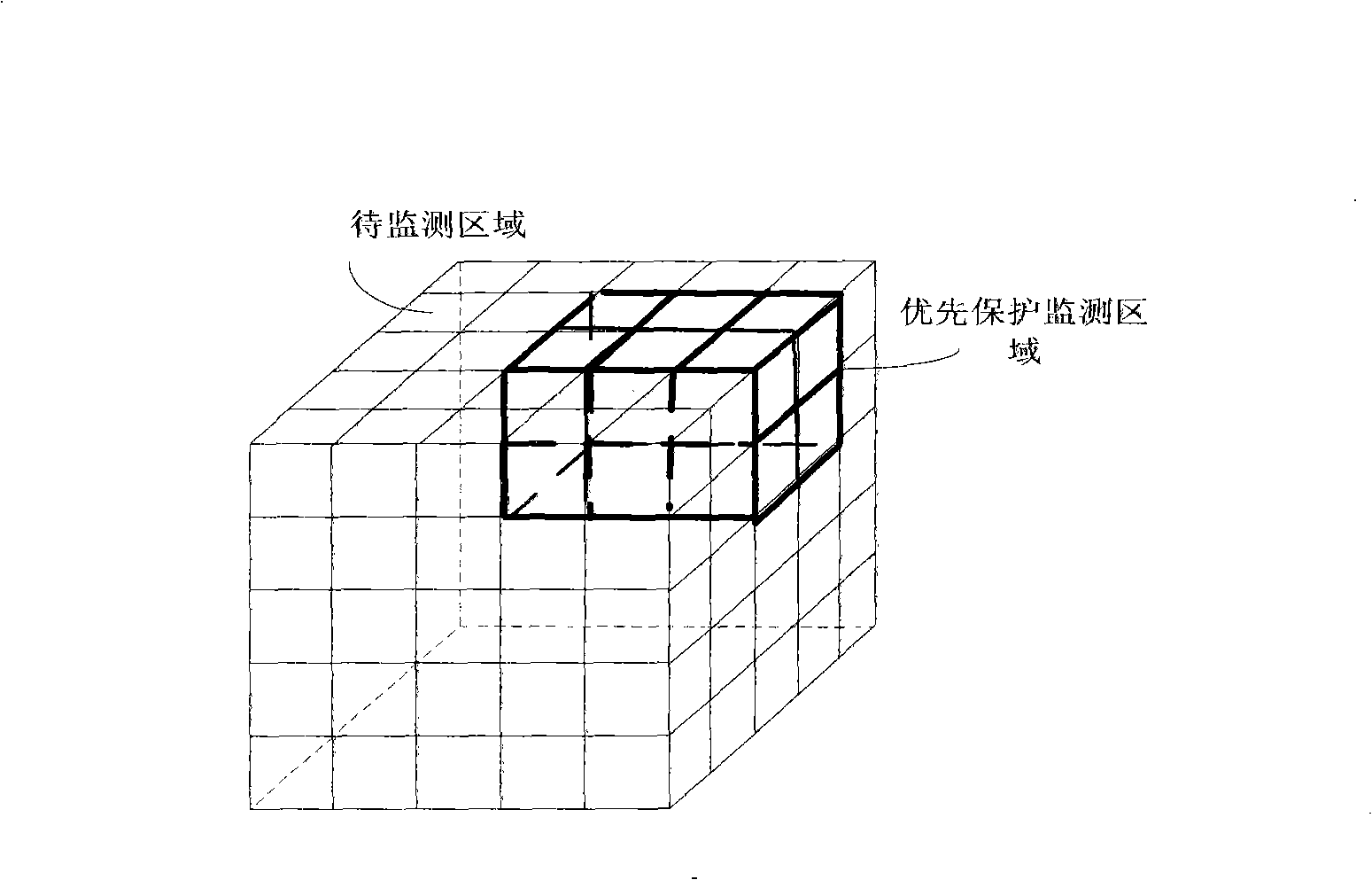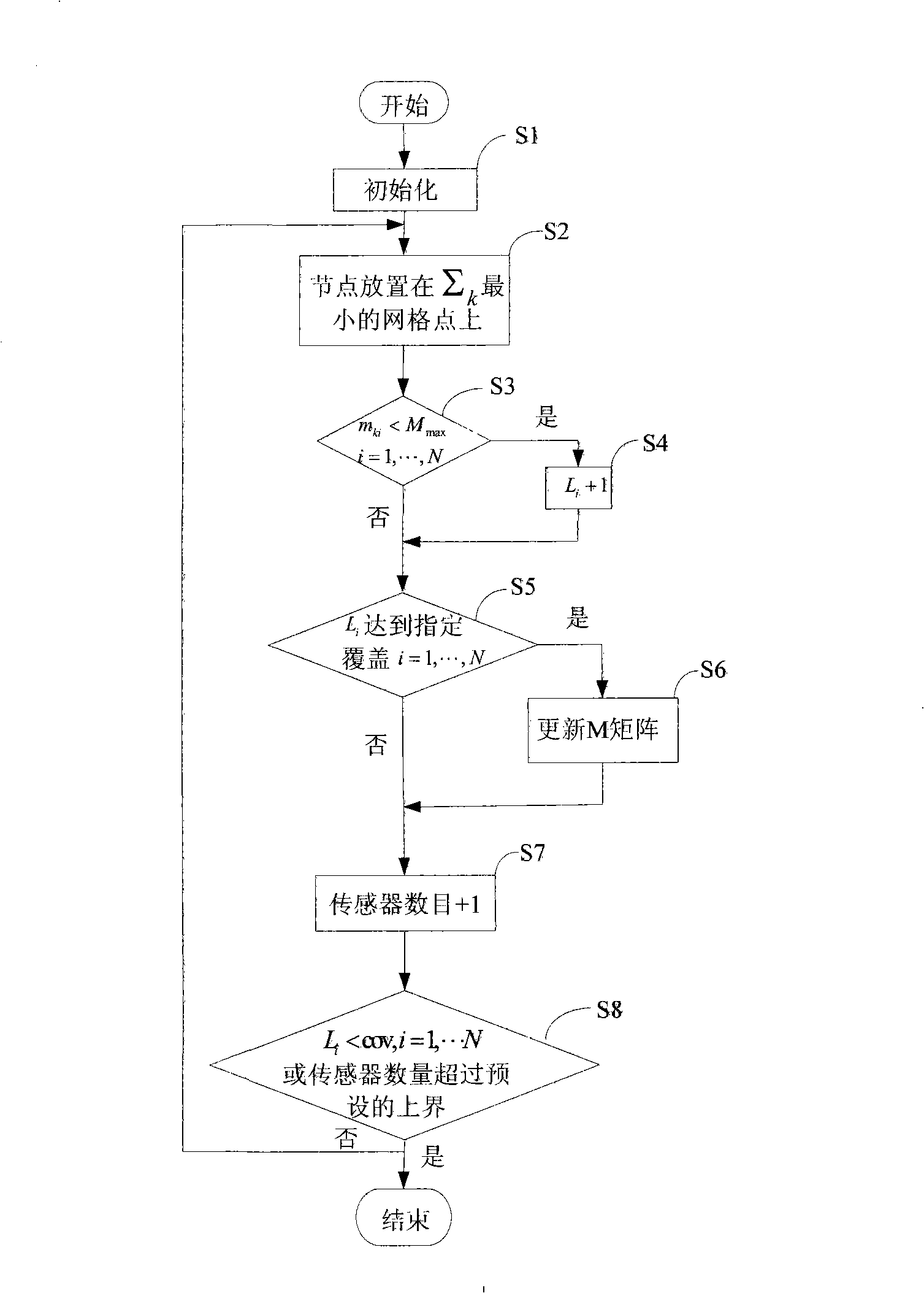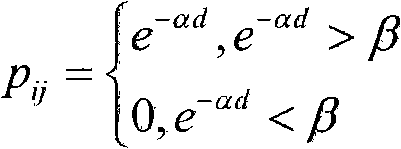3-D wireless sensor network coverage method based on probability
A wireless sensor and network coverage technology, applied in the field of probability-based three-dimensional wireless sensor network K-coverage control, to achieve high reliability and robustness
- Summary
- Abstract
- Description
- Claims
- Application Information
AI Technical Summary
Problems solved by technology
Method used
Image
Examples
Embodiment Construction
[0031] The core idea of the present invention is to optimize the average coverage of the grid points, that is, to place the sensor node in the grid points, so that the sum of the error probability of the sensor node to all other grid points in the monitoring area is the smallest. Use an iterative greedy heuristic method to determine the position of sensor nodes in the grid, and each iteration completes the placement of a node until the total number of nodes reaches the preset upper bound, or each grid point reaches K-coverage with probability T .
[0032] In order to make the purpose, technical solution and advantages of the present invention clearer, the present invention will be further described in detail below in conjunction with the accompanying drawings.
[0033] As mentioned above, the three-dimensional monitoring area is divided into N=n×n×n grids, and there are N grid points in total, where the value of n can be determined according to the accuracy required by the s...
PUM
 Login to View More
Login to View More Abstract
Description
Claims
Application Information
 Login to View More
Login to View More - R&D
- Intellectual Property
- Life Sciences
- Materials
- Tech Scout
- Unparalleled Data Quality
- Higher Quality Content
- 60% Fewer Hallucinations
Browse by: Latest US Patents, China's latest patents, Technical Efficacy Thesaurus, Application Domain, Technology Topic, Popular Technical Reports.
© 2025 PatSnap. All rights reserved.Legal|Privacy policy|Modern Slavery Act Transparency Statement|Sitemap|About US| Contact US: help@patsnap.com



